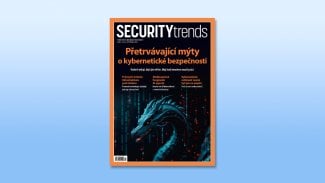gpgsm
NAME
gpgsm
- CMS encryption and signing tool
SYNOPSIS
gpgsm
[--homedir
R dir ]
[--options
R file ]
[options]
command
[args]
DESCRIPTION
gpgsm is a tool similar to gpg to provide digital
encryption and signing servicesd on X.509 certificates and the CMS
protocol. It is mainly used as a backend for S/MIME mail processing.
gpgsm includes a full features certificate management and
complies with all rules defined for the German Sphinx project.
COMMANDS
Commands are not distinguished from options execpt for the fact that
only one command is allowed.
Commands not specific to the function
--version
Print the program version and licensing information. Not that you can
abbreviate this command.
--help, -h
Print a usage message summarizing the most usefule command-line options.
Not that you can abbreviate this command.
--warranty
Print warranty information.
--dump-options
--encrypt
Perform an encryption. The keys the data is encrypted too must be set
using the option --recipient.
--decrypt
Perform a decryption; the type of input is automatically determined. It
may either be in binary form or PEM encoded; automatic determination of
base-64 encoding is not done.
--sign
Create a digital signature. The key used is either the fist one found
in the keybox or those set with the --local-user option.
--verify
Check a signature file for validity. Depending on the arguments a
detached signatrue may also be checked.
--server
Run in server mode and wait for commands on the stdin.
--call-dirmngr command [args]
Behave as a Dirmngr client issuing the request command with the
optional list of args. The output of the Dirmngr is printed
stdout. Please note that file names given as arguments should have an
absulte file name (i.e. commencing with / because they are
passed verbatim to the Dirmngr and the working directory of the
Dirmngr might not be the same as the one of this client. Currently it
is not possible to pass data via stdin to the Dirmngr. command
should not contain spaces.
This is command is required for certain maintaining tasks of the dirmngr
where a dirmngr must be able to call back to gpgsm. See the Dirmngr
manual for details.
--call-protect-tool arguments
Certain maintenance operations are done by an external program call
gpg-protect-tool; this is usually not installed in a directory
listed in the PATH variable. This command provides a simple wrapper to
access this tool. arguments are passed verbatim to this command;
use
'--help'
to get a list of supported operations.
How to manage the certificates and keys
--gen-key
This command will only print an error message and direct the user to the
gpgsm-gencert.sh script.
--list-keys
-k
List all available certificates stored in the local key database.
Note that the displayed data might be reformatted for better human
readability and illegal characters are replaced by safe substitutes.
--list-secret-keys
-K
List all available certificates for which a corresponding a secret key
is available.
--list-external-keys pattern
List certificates matching pattern using an external server. This
utilizes the dirmngr service.
--list-chain
Same as --list-keys but also prints all keys making up the chain.
--dump-cert
--dump-keys
List all available certificates stored in the local key database using a
format useful mainly for debugging.
--dump-chain
Same as --dump-keys but also prints all keys making up the chain.
--dump-secret-keys
List all available certificates for which a corresponding a secret key
is available using a format useful mainly for debugging.
--dump-external-keys pattern
List certificates matching pattern using an external server.
This utilizes the dirmngr service. It uses a format useful
mainly for debugging.
--keydb-clear-some-cert-flags
This is a debugging aid to reset certain flags in the key database
which are used to cache certain certificate stati. It is especially
useful if a bad CRL or a weird running OCSP reponder did accidently
revoke certificate. There is no security issue with this command
because gpgsm always make sure that the validity of a certificate is
checked right before it is used.
--delete-keys pattern
Delete the keys matching pattern.
--export [pattern]
Export all certificates stored in the Keybox or those specified by the
optional pattern. When using along with the --armor option
a few informational lines are prepended before each block.
--export-secret-key-p12 key-id
Export the private key and the certificate identified by key-id in
a PKCS#12 format. When using along with the --armor option a few
informational lines are prepended to the output. Note, that the PKCS#12
format is not very secure and this command is only provided if there is
no other way to exchange the private key. (see: [option --p12-charset])
--import [files]
Import the certificates from the PEM or binary encoded files as well as
from signed-only messages. This command may also be used to import a
secret key from a PKCS#12 file.
--learn-card
Read information about the private keys from the smartcard and import
the certificates from there. This command utilizes the gpg-agent
and in turn the scdaemon.
--passwd user_id
Change the passphrase of the private key belonging to the certificate
specified as user_id. Note, that changing the passphrase/PIN of a
smartcard is not yet supported.
OPTIONS
GPGSM comes features a bunch ofoptions to control the exact behaviour
and to change the default configuration.
How to change the configuration
These options are used to change the configuraton and are usually found in the option file.--options file
Reads configuration from file instead of from the default
per-user configuration file. The default configuration file is named
`gpgsm.conf' and expected in the `.gnupg' directory directly
below the home directory of the user.
--homedir dir
Set the name of the home directory to dir. If his option is not
used, the home directory defaults to `~/.gnupg'. It is only
recognized when given on the command line. It also overrides any home
directory stated through the environment variable `GNUPGHOME' or
(on W32 systems) by means on the Registry entry
HKCU\Software\GNU\GnuPG:HomeDir.
-v
--verbose
Outputs additional information while running.
You can increase the verbosity by giving several
verbose commands to gpgsm, such as
'-vv'
.
--policy-file filename
Change the default name of the policy file to filename.
--agent-program file
Specify an agent program to be used for secret key operations. The
default value is the `/usr/local/bin/gpg-agent'. This is only used
as a fallback when the envrionment variable GPG_AGENT_INFO is not
set or a running agent can't be connected.
--dirmngr-program file
Specify a dirmngr program to be used for CRL checks. The
default value is `/usr/sbin/dirmngr'. This is only used as a
fallback when the environment variable DIRMNGR_INFO is not set or
a running dirmngr can't be connected.
--prefer-system-dirmngr
If a system wide dirmngr is running in daemon mode, first try
to connect to this one. Fallback to a pipe based server if this does
not work.
--no-secmem-warning
Don't print a warning when the so called "secure memory" can't be used.
--log-file file
--enable-policy-checks
--disable-policy-checks
By default policy checks are enabled. These options may be used to
change it.
--enable-crl-checks
--disable-crl-checks
By default the CRL checks are enabled and the DirMngr is used
to check for revoked certificates. The disable option is most useful
with an off-line network connection to suppress this check.
--enable-trusted-cert-crl-check
--disable-trusted-cert-crl-check
By default the CRL for trusted root certificates are checked
like for any other certificates. This allows a CA to revoke its own
certificates voluntary without the need of putting all ever issued
certificates into a CRL. The disable option may be used to switch this
extra check off. Due to the caching done by the Dirmngr, there won't be
any noticeable performance gain. Note, that this also disables possible
OCSP checks for trusted root certificates. A more specific way of
disabling this check is by adding the ``relax'' keyword to the root CA
line of the `trustlist.txt'
--force-crl-refresh
Tell the dirmngr to reload the CRL for each request. For better
performance, the dirmngr will actually optimize this by suppressing
the loading for short time intervalls (e.g. 30 minutes). This option
is useful to make sure that a fresh CRL is available for certificates
hold in the keybox. The suggested way of doing this is by using it
along with the option --with-validation for a key listing
command. This option should not be used in a configuration file.
--enable-ocsp
--disable-ocsp
Be default OCSP checks are disabled. The enable opton may
be used to enable OCSP checks via Dirmngr. If CRL checks
are also enabled, CRLs will be used as a fallback if for some reason an
OCSP request won't succeed. Note, that you have to allow OCSP
requests in Dirmngr's configuration too (option
--allow-ocsp and configure dirmngr properly. If you don't do
so you will get the error code
.
Input and Output
--armor
-a
Create PEM encoded output. Default is binary output.
--base64
Create Base-64 encoded output; i.e. PEM without the header lines.
--assume-armor
Assume the input data is PEM encoded. Default is to autodetect the
encoding but this is may fail.
--assume-base64
Assume the input data is plain base-64 encoded.
--assume-binary
Assume the input data is binary encoded.
--p12-charset name
gpgsm uses the UTF-8 encoding when encoding passphrases for
PKCS#12 files. This option may be used to force the passphrase to be
encoded in the specified encoding name. This is useful if the
application used to import the key uses a different encoding and thus
won't be able to import a file generated by gpgsm. Commonly
used values for name are Latin1 and CP850. Note
that gpgsm itself automagically imports any file with a
passphrase encoded to the most commonly used encodings.
--local-user user_id
-u user_id
Set the user(s) to be used for signing. The default is the first
secret key found in the database.
--recipient name
-r
Encrypt to the user id name. There are several ways a user id
may be given (see: [how-to-specify-a-user-id]).
--output file
-o file
Write output to file. The default is to write it to stdout.
--with-key-data
Displays extra information with the --list-keys commands. Especially
a line tagged grp is printed which tells you the keygrip of a
key. This string is for example used as the file name of the
secret key.
--with-validation
When doing a key listing, do a full validation check for each key and
print the result. This is usually a slow operation because it
requires a CRL lookup and other operations.
When used along with --import, a validation of the certificate to
import is done and only imported if it succeeds the test. Note that
this does not affect an already available cwertificate in the DB.
This option is therefore useful to simply verify a certificate.
--with-md5-fingerprint
--include-certs n
Using n of -2 includes all certificate except for the root cert,
-1 includes all certs, 0 does not include any certs, 1 includes only
the signers cert (this is the default) and all other positive
values include up to n certificates starting with the signer cert.
--cipher-algo oid
--faked-system-time epoch
This option is only useful for testing; it sets the system time back or
forth to epoch which is the number of seconds elapsed since the year
1970.
--with-ephemeral-keys
Include ephemeral flagged keys in the output of key listings.
--debug-level level
Select the debug level for investigating problems. level may be
one of:
none
no debugging at all.
basic
some basic debug messages
advanced
more verbose debug messages
expert
even more detailed messages
guru
all of the debug messages you can get
How these messages are mapped to the actual debugging flags is not
specified and may change with newer releaes of this program. They are
however carefully selected to best aid in debugging.
--debug flags
This option is only useful for debugging and the behaviour may change
at any time without notice; using --debug-levels is the
preferred method to select the debug verbosity. FLAGS are bit encoded
and may be given in usual C-Syntax. The currently defined bits are:
0 (1)
X.509 or OpenPGP protocol related data
1 (2)
values of big number integers
2 (4)
low level crypto operations
5 (32)
memory allocation
6 (64)
caching
7 (128)
show memory statistics.
9 (512)
write hashed data to files named dbgmd-000*
10 (1024)
trace Assuan protocol
Note, that all flags set using this option may get overriden by
--debug-level.
--debug-all
Same as --debug=0xffffffff
--debug-allow-core-dump
Usually gpgsm tries to avoid dumping core by well written code and by
disabling core dumps for security reasons. However, bugs are pretty
durable beasts and to squash them it is sometimes useful to have a core
dump. This option enables core dumps unless the Bad Thing happened
before the option parsing.
--debug-no-chain-validation
This is actually not a debugging option but only useful as such. It
lets gpgsm bypass all certificate chain validation checks.
--debug-ignore-expiration
This is actually not a debugging option but only useful as such. It
lets gpgsm ignore all notAfter dates, this is used by the regresssion
tests.
--fixed-passphrase string
Supply the passphrase string to the gpg-protect-tool. This
option is only useful for the regression tests included with this
package and may be revised or removed at any time without notice.
All the long options may also be given in the configuration file after
stripping off the two leading dashes.
HOW TO SPECIFY A USER ID
There are different ways to specify a user ID to GnuPG. Some of them
are only valid for gpg others are only good for
gpgsm. Here is the entire list of ways to specify a key:
By key Id.
This format is deduced from the length of the string and its content or
0x prefix. The key Id of an X.509 certificate are the low 64 bits
of its SHA-1 fingerprint. The use of key Ids is just a shortcut, for
all automated processing the fingerprint should be used.
When using gpg an exclamation mark (!) may be appended to
force using the specified primary or secondary key and not to try and
calculate which primary or secondary key to use.
The last four lines of the example give the key ID in their long form as
internally used by the OpenPGP protocol. You can see the long key ID
using the option --with-colons.
234567C4 0F34E556E 01347A56A 0xAB123456 234AABBCC34567C4 0F323456784E56EAB 01AB3FED1347A5612 0x234AABBCC34567C4
By fingerprint.
This format is deduced from the length of the string and its content or
the 0x prefix. Note, that only the 20 byte version fingerprint
is available with gpgsm (i.e. the SHA-1 hash of the
certificate).
When using gpg an exclamation mark (!) may be appended to
force using the specified primary or secondary key and not to try and
calculate which primary or secondary key to use.
The best way to specify a key Id is by using the fingerprint. This
avoids any ambiguities in case that there are duplicated key IDs.
1234343434343434C434343434343434 123434343434343C3434343434343734349A3434 0E12343434343434343434EAB3484343434343434 0xE12343434343434343434EAB3484343434343434(gpgsm also accepts colons between each pair of hexadecimal digits because this is the de-facto standard on how to present X.509 fingerprints.)
By exact match on OpenPGP user ID.
This is denoted by a leading equal sign. It does not make sense for
X.509 certificates.
=Heinrich Heine <heinrichh@uni-duesseldorf.de>
By exact match on an email address.
This is indicated by enclosing the email address in the usual way
with left and right angles.
<heinrichh@uni-duesseldorf.de>
By word match.
All words must match exactly (not case sensitive) but can appear in any
order in the user ID or a subjects name. Words are any sequences of
letters, digits, the underscore and all characters with bit 7 set.
+Heinrich Heine duesseldorf
By exact match on the subject's DN.
This is indicated by a leading slash, directly followed by the RFC-2253
encoded DN of the subject. Note that you can't use the string printed
by "gpgsm --list-keys" because that one as been reordered and modified
for better readability; use --with-colons to print the raw (but standard
escaped) RFC-2253 string
/CN=Heinrich Heine,O=Poets,L=Paris,C=FR
By exact match on the issuer's DN.
This is indicated by a leading hash mark, directly followed by a slash
and then directly followed by the rfc2253 encoded DN of the issuer.
This should return the Root cert of the issuer. See note above.
#/CN=Root Cert,O=Poets,L=Paris,C=FR
By exact match on serial number and issuer's DN.
This is indicated by a hash mark, followed by the hexadecmal
representation of the serial number, the followed by a slash and the
RFC-2253 encoded DN of the issuer. See note above.
#4F03/CN=Root Cert,O=Poets,L=Paris,C=FR
By keygrip
This is indicated by an ampersand followed by the 40 hex digits of a
keygrip. gpgsm prints the keygrip when using the command
--dump-cert. It does not yet work for OpenPGP keys.
&D75F22C3F86E355877348498CDC92BD21010A480
By substring match.
This is the default mode but applications may want to explicitly
indicate this by putting the asterisk in front. Match is not case
sensitive.
Heine *HeinePlease note that we have reused the hash mark identifier which was used in old GnuPG versions to indicate the so called local-id. It is not anymore used and there should be no conflict when used with X.509 stuff. Using the RFC-2253 format of DNs has the drawback that it is not possible to map them back to the original encoding, however we don't have to do this because our key database stores this encoding as meta data.
EXAMPLES
$ gpgsm -er goo@bar.net <plaintext >ciphertextgpgsm is often used as a backend engine by other software. To help with this a machine interface has been defined to have an unambiguous way to do this. This is most likely used with the --server command but may also be used in the standard operation mode by using the --status-fd option. It is very important to understand the semantics used with signature verification. Checking a signature is not as simple as it may sound and so the ooperation si a bit complicated. In mosted cases it is required to look at several status lines. Here is a table of all cases a signed message may have:
The signature is valid
This does mean that the signature has been successfully verified, the
certificates are all sane. However there are two subcases with
important information: One of the certificates may have expired or a
signature of a message itself as expired. It is a sound practise to
consider such a signature still as valid but additional information
should be displayed. Depending on the subcase gpgsm will issue
these status codes:
.RS
.TP
signature valid and nothing did expire
GOODSIG, VALIDSIG, TRUST_FULLY
.TP
signature valid but at least one certificate has expired
EXPKEYSIG, VALIDSIG, TRUST_FULLY
.TP
signature valid but expired
EXPSIG, VALIDSIG, TRUST_FULLY
Note, that this case is currently not implemented.
.RE
The signature is invalid
This means that the signature verification failed (this is an indication
of af a transfer error, a programm error or tampering with the message).
gpgsm issues one of these status codes sequences:
.RS
.TP
BADSIG
.TP
GOODSIG, VALIDSIG TRUST_NEVER
.RE
Error verifying a signature
For some reason the signature could not be verified, i.e. it can't be
decided whether the signature is valid or invalid. A common reason for
this is a missing certificate.
FILES
There are a few configuration files to control certain aspects of
gpgsm's operation. Unless noted, they are expected in the
current home directory (see: [option --homedir]).
gpgsm.conf
This is the standard configuration file read by gpgsm on
startup. It may contain any valid long option; the leading two dashes
may not be entered and the option may not be abbreviated. This default
name may be changed on the command line (see: [option
--options]).
policies.txt
This is a list of allowed CA policies. This file should list the
object identifiers of the policies line by line. Empty lines and
lines starting with a hash mark are ignored. Policies missing in this
file and not marked as critical in the certificate will print only a
warning; certificates with policies marked as critical and not listed
in this file will fail the signature verification.
For example, to allow only the policy 2.289.9.9, the file should look
like this:
# Allowed policies 2.289.9.9
qualified.txt
This is the list of root certificates used for qualified certificates.
They are defined as certificates capable of creating legally binding
signatures in the same way as handwritten signatures are. Comments
start with a hash mark and empty lines are ignored. Lines do have a
length limit but this is not a serious limitation as the format of the
entries is fixed and checked by gpgsm: A non-comment line starts with
optional white spaces, followed by exactly 40 hex character, white space
and a lowercased 2 letter country code. Additional data delimited with
by a white space is current ignored but might late be used for other
purposes.
Note that even if a certificate is listed in this file, this does not
mean that thecertificate is trusted; in general the certificates listed
in this file need to be listed also in `trustlist.txt'.
This is a global file an installed in the data directory
(e.g. `/usr/share/gnupg/qualified.txt'). GnuPG installs a suitable
file with root certificates as used in Germany. As new Root-CA
certificates may be issued over time, these entries may need to be
updated; new distributions of this software should come with an updated
list but it is still the responsibility of the Administrator to check
that this list is correct.
Everytime gpgsm uses a certificate for signing or verification
this file will be consulted to check whether the certificate under
question has ultimately been issued by one of these CAs. If this is the
case the user will be informed that the verified signature represents a
legally binding (``qualified'') signature. When creating a signature
using such a certificate an extra prompt will be issued to let the user
confirm that such a legally binding signature shall really be created.
Because this software has not yet been approved for use with such
certificates, appropriate notices will be shown to indicate this fact.
Note that on larger installations, it is useful to put predefined files
into the directory `/etc/skel/.gnupg/' so that newly created users
start up with a working configuration. For existing users the a small
helper script is provided to create these files (see: [addgnupghome]).
For internal purposes gpgsm creates and maintaines a few other files;
They all live in in the current home directory (see: [option
--homedir]). Only gpgsm may modify these files.
pubring.kbx
This a database file storing the certificates as well as meta
information. For debugging purposes the tool kbxutil may be
used to show the internal structure of this file.
random_seed
This content of this file is used to maintain the internal state of the
random number generator accross invocations. The same file is used by
other programs of this software too.
SEE ALSO
gpg2(1),
gpg-agent(1)
The full documentation for this tool is maintained as a Texinfo manual.
If GnuPG and the info program are properly installed at your site, the
command
info gnupgshould give you access to the complete manual including a menu structure and an index.



















